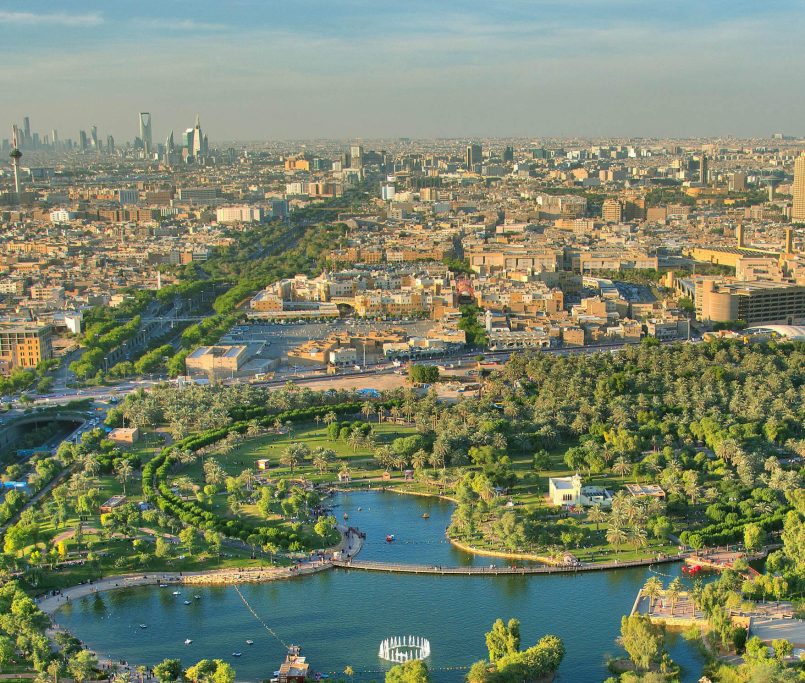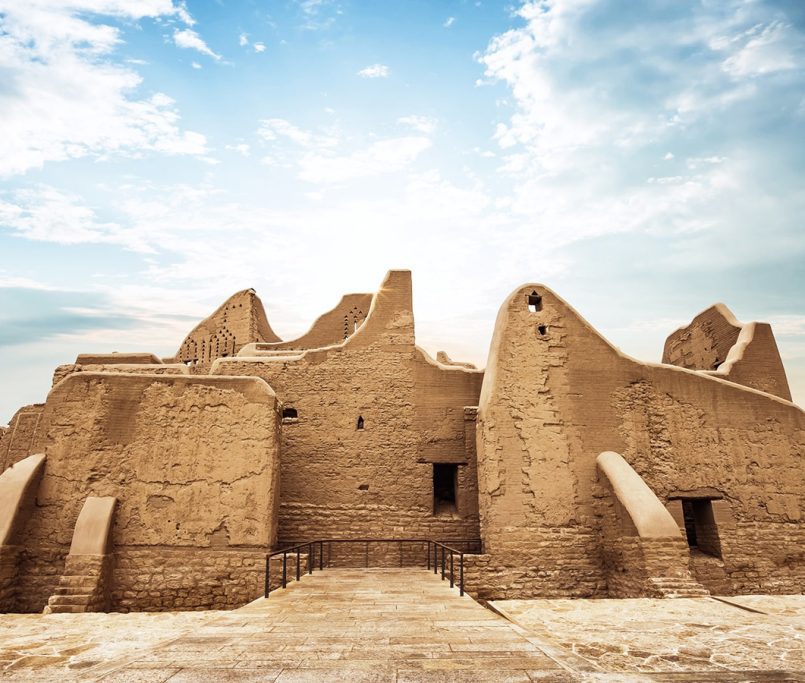Sustainable Architecture: Shaping Saudi Arabia’s Future Aligned with Vision 2030
Sustainable Architecture: Shaping Saudi Arabia’s Future Aligned with Vision 2030
As the Kingdom of Saudi Arabia undertakes one of the most ambitious transformations in its history, the role of sustainable architecture has taken centre stage. In alignment with Vision 2030, sustainability is no longer a complementary design feature; it is a central principle shaping how cities, communities, and infrastructure are conceived, built, and experienced.
From visionary giga-projects such as NEOM and THE LINE to expansive urban parks and large-scale solar energy installations, Saudi Arabia is redefining the boundaries of environmentally responsible development. At the heart of this movement lies sustainable architecture, a discipline that bridges cultural identity, technological advancement, and ecological stewardship.
Understanding Sustainable Architecture
Sustainable architecture refers to the design and construction of buildings that minimise environmental impact, optimise resource use, and promote the long-term well-being of occupants. This includes:
- Reducing energy consumption through passive and active systems
- Integrating renewable energy sources such as solar and wind
- Using recycled and low-impact construction materials
- Enhancing water conservation and management
- Designing in harmony with the local climate, topography, and cultural context
It is not only about reducing harm to the environment but also about generating long-term value, economically, socially, and ecologically.
Vision 2030 and the Mandate for Sustainability
Vision 2030 sets out a clear national framework for sustainability. In 2021, the Crown Prince launched the Saudi Green Initiative (SGI), which includes:
- Planting 10 billion trees across the Kingdom
- Protecting over 30% of terrestrial and marine areas
- Reducing carbon emissions by more than 278 million tonnes annually by 2030
- Generating 50% of the country’s energy from renewable sources by 2030
In the built environment, these targets translate into walkable cities, green buildings, car-free districts, energy-positive infrastructure, and an urban development model rooted in circular economy principles.
The Rise of Sustainable Urbanism in the Kingdom
Saudi Arabia’s cities are undergoing a comprehensive reimagining, shaped by sustainable planning and design principles. Key developments include:
- THE LINE at NEOM
One of the most ambitious urban projects in the world, THE LINE embodies the Kingdom’s new vision for urban living:
- A 170-kilometre-long linear city
- Designed to house nine million people
- Powered entirely by renewable energy
- Walkable communities with no need for cars
- Layered city functions to reduce land use
- Protection of 95% of the surrounding natural environment
Projections suggest THE LINE will prevent over one billion tonnes of carbon emissions across its lifetime compared with conventional urban models.
🡒 Source: NEOM Official Website
- Green Riyadh and King Salman Park
Riyadh is becoming a global model for integrating nature into the urban fabric through initiatives like Green Riyadh and King Salman Park, which include:
- The planting of 7.5 million trees throughout the city
- Increasing per capita green space from 1.7 to 28 square metres
- Reducing ambient temperatures by up to 2°C
- Enhancing biodiversity and improving stormwater absorption
King Salman Park will span 13.4 square kilometres, offering cultural venues, pedestrian paths, water features, and ecological zones that function as both public amenities and environmental infrastructure.
🡒 Source: Royal Commission for Riyadh City
- Sudair Solar PV Project
To support sustainable construction and energy use, Saudi Arabia is investing heavily in renewables, with the Sudair Solar PV Project being one of the flagship initiatives:
- 1,500 MW of renewable energy capacity
- Enough to power 185,000 households
- Annual offset of nearly 3 million tonnes of CO₂
Projects such as this reduce the carbon intensity of the built environment and enable future developments to operate on clean energy.
Materials and Climate-Conscious Design
In a region characterised by extreme temperatures and arid conditions, material selection is a critical aspect of sustainable architecture. Emerging strategies include:
- Rammed earth and adobe construction for thermal mass
- High-albedo coatings to reflect solar radiation
- Recycled and reused steel and aluminium
- Bio-based materials such as hempcrete and mycelium composites
These materials not only reduce embodied carbon but also respond to local environmental pressures more effectively than traditional alternatives.

Passive Design Meets Smart Technology
Designers and engineers are combining passive architectural strategies with advanced technologies to enhance building performance. Examples include:
- Orienting buildings to reduce solar heat gain
- Deep overhangs and traditional mashrabiya screens for shading
- Courtyards and wind towers for natural ventilation
- High-performance glazing and insulation
- AI-driven energy management systems
In major developments across Riyadh and Jeddah, buildings incorporating these principles have achieved energy savings of up to 40% compared to conventional models.
Biophilic and Culturally Integrated Architecture
In Saudi Arabia, sustainable design must be culturally responsive. This involves:
- Integrating mosques into urban design with correct orientation and visibility
- Planning for gender-sensitive circulation in public spaces
- Designing shaded, walkable outdoor areas to encourage social life despite the heat
- Using native plants and water-saving landscaping (xeriscaping)
- Ensuring accessibility for prayer, ablution, and religious observance
Biophilic design, which strengthens the human connection to nature, is also growing in relevance. Green walls, rooftop gardens, and interior courtyards enhance well-being while reducing energy demand.
Water Management and Conservation
Water scarcity is one of the most critical challenges in Saudi Arabia. Sustainable architecture addresses this through:
- Greywater recycling for non-potable use
- Ultra-low flow fixtures and smart metering
- Capturing and storing rainwater where possible
- Using Treated Sewage Effluent (TSE) for irrigation
- Implementing drought-tolerant landscaping systems
The National Water Strategy 2030 aims to reduce average household water use from 263 litres to 150 litres per person per day — a reduction that requires smart planning and building design.
The Circular Economy and Construction Waste
The construction sector contributes significantly to solid waste generation. Current estimates suggest that Saudi Arabia produces over 130 million tonnes of construction and demolition waste annually.
Vision 2030 includes a national goal to divert at least 35% of this waste from landfill by 2030 through:
- Deconstruction and material reuse
- Modular and prefabricated building components
- Lifecycle carbon accounting in project planning
- Recycling centres integrated into city masterplans
Circular construction is not only a sustainability measure but also an economic opportunity for innovation and job creation.

Green Riyadh
Barriers and Opportunities
Despite rapid progress, several barriers must still be addressed:
|
Barrier |
Response |
|
Shortage of local green building expertise |
Expand university programmes and industry certification in sustainable design |
|
Perceived high cost of sustainable features |
Demonstrate long-term operational savings and ROI |
|
Lack of public awareness |
Promote sustainability through public campaigns and policy transparency |
|
Climatic constraints |
Invest in climate-adaptive design research and local innovation hubs |
Conclusion: Building the Future Responsibly
Saudi Arabia’s approach to sustainable architecture is bold, adaptive, and deeply rooted in its unique environmental and cultural context. It draws upon international best practice while responding to local needs and constraints.
With the support of national strategies like Vision 2030, projects such as THE LINE, King Salman Park, and the Sudair Solar Plant are setting a precedent for how the built environment can drive positive change. Architects, engineers, urban planners, and policymakers are collectively reimagining the cities of the future — not as resource-hungry centres, but as ecosystems of life, culture, and sustainability.
Sustainable architecture is no longer optional. In the Kingdom of Saudi Arabia, it is essential.



